‘We’re Here’ Creators Stephen Warren & Johnnie Ingram and Showrunner Peter LoGreco On Expanding The Family For A “Diversity Of Stories” & “The Love That Drag Can Bring”
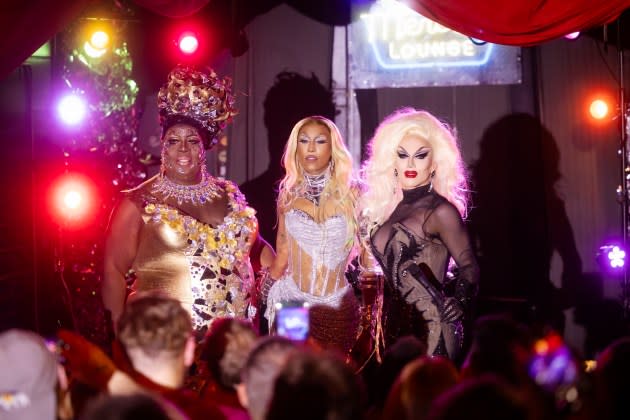
Since Stephen Warren and Johnnie Ingram created the series in 2020, along with the help of showrunner Peter LoGreco, We’re Here has won four Emmys and shined a light on the drag and LGBTQ communities in small towns around the U.S. With today’s political climate, especially in smaller conservative areas where Pride events are being canceled and hate is being directed towards the drag community, the trio decided that a format change was necessary for the fourth season to really get their message across: “There’s definitely a lot more love out there than hate.”
Season four of We’re Here breaks from the format of the first three seasons a bit, with four new queens – Priyanka, Sasha Velour, Jaida Essence Hall and Latrice Royale – and focusing on only two locations with three episodes in Tennessee and three episodes in Oklahoma. The series stills has the queens finding and connecting with drag daughters as they learn their stories and help them be more comfortable with who they are in their conservative towns. With more time in each location, Warren, Ingram and LoGreco were able to dive deeper into personal stories while exploring the political and social issues of each area.
More from Deadline
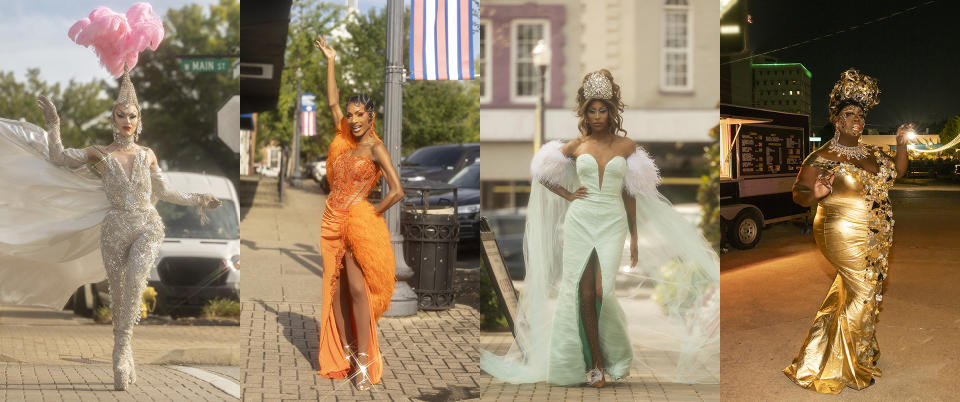
DEADLINE: What prompted the changes to season four of We’re Here, and how did Priyanka, Sasha Velour, Jaida Essence Hall and Latrice Royale get involved?
JOHNNIE INGRAM: Well, we are just so happy to have a season four of We’re Here and we wanted to explore and showcase all different types of drag. I think to meet the moment of the political climate that has increasingly been attacking the trans and the drag community specifically, we definitely thought it was important to expand the We’re Here family and go a little bit deeper, not only into the experience of this phenomenon of a celebrity drag performer, but link them to the folks that are directly affected by the political climate.
What we really noticed as we switched the format to stay in these places longer, not only how we get to know the community even deeper, but how it directly affects us personally and the queens and how that’s even moved them as artists. And I think that’s been something that was very important when we were expanding our family, is to bring artists that have an empathy, but also are able to have the maternal side of drag and share their drag mothership, so to speak, to connect with real people.
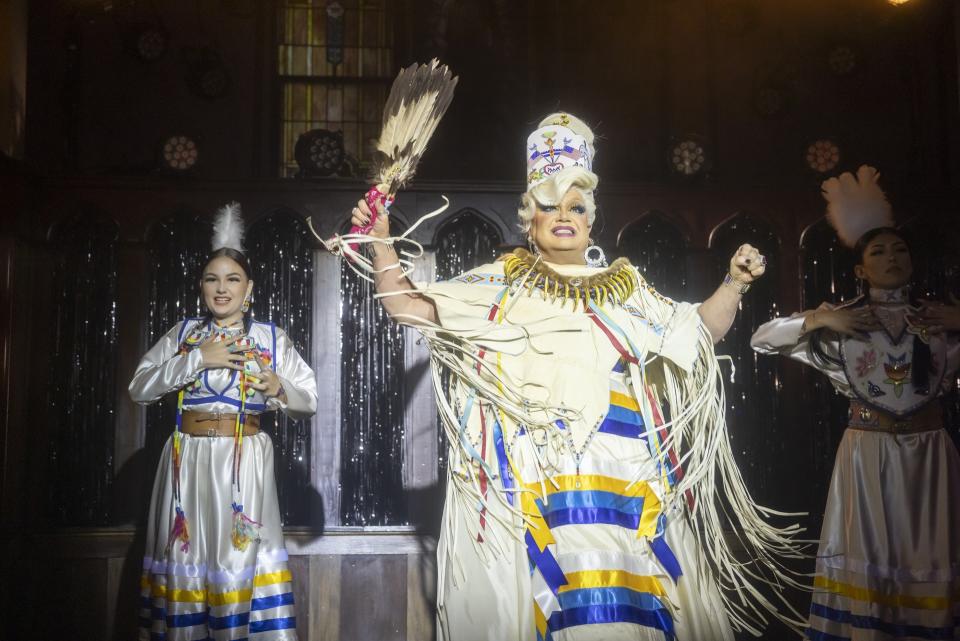
STEPHEN WARREN: We needed to expand the family because the sense of urgency in the country is at an all-time high, at least as far as in my lifetime, in that there’s so many attacks on the LGBTQ community. We need to be able to showcase the diversity of stories within our community, and we did that by bringing these new queens, each with their very unique perspective. Bob the Drag Queen, Shangela and Eureka O’Hara all came from small towns and all have their own unique histories that they were able to bring, and that was beautiful, but these four people have a completely different set of experiences, and that’s what we have to show to the world. There’s such a breadth of experience, a breadth of what it means to be queer in this world, and that all of these people can bring their knowledge and love to all the drag kids that we’ve encountered this season.
PETER LOGRECO: In terms of the queens, there’s also a human element to it, which is these queens have been able to bear their souls, share their stories and really show a different side of themselves than they do as drag performers on stage. I think that after a while, that’s something that can be taxing. Even rotating the cast gives Sasha, Priyanka, Latrice and Jaida an opportunity to sort of relieve Bob, Shangela and Eureka, and begin to bring their own experiences and take a fresh step and look at that. I mean, Eureka, Shangela and Bob really gave it their all, and they gave it their all over and over and over again, and it takes a lot out of someone. It’d be great to see them back at some point, but being able to bring a renewed energy to this endeavor and to this fight was something that was really, really powerful and important for us to do because we knew what we were walking into was a lot.
DEADLINE: How did you choose the two locations for the season of Tennessee and Oklahoma?
LOGRECO: After three seasons of the show, we knew what the different ways in which we could approach finding a location would be. Sometimes we started with a really interesting person’s story, or with a situation that had arisen on a political or cultural level in a given town. But again, I think given the fact that legislation and national news was sort of beginning to bubble up in certain places, we really went top down this season and looked at where there is a very active cultural, political and institutional attack happening essentially on LGBTQ folks, right? And Tennessee and Oklahoma were both places. They weren’t the only places, but they were both places where that seemed to be a very palpable, present ongoing thing.
So, I think it was not a difficult choice in the sense that those were the places where news was being made around this stuff. But at the same time, obviously it was a very difficult choice because we knew we were walking into a pretty hostile situation, going back to what the queens are putting up with and how they’re having to face what we’re doing.
Beyond that, you start to look for stories. You find people who are connected as closely as possible to those individual political and cultural conflicts going on, and we were able to find those things really well in Tennessee and Oklahoma. Knowing that those were places we could stay for a longer time really enhanced the storytelling and made the show not just more activist, but also more entertaining and more interesting and engaging on a character level to go further in depth of building a world and talking about who these people really are and who the people in their lives are.
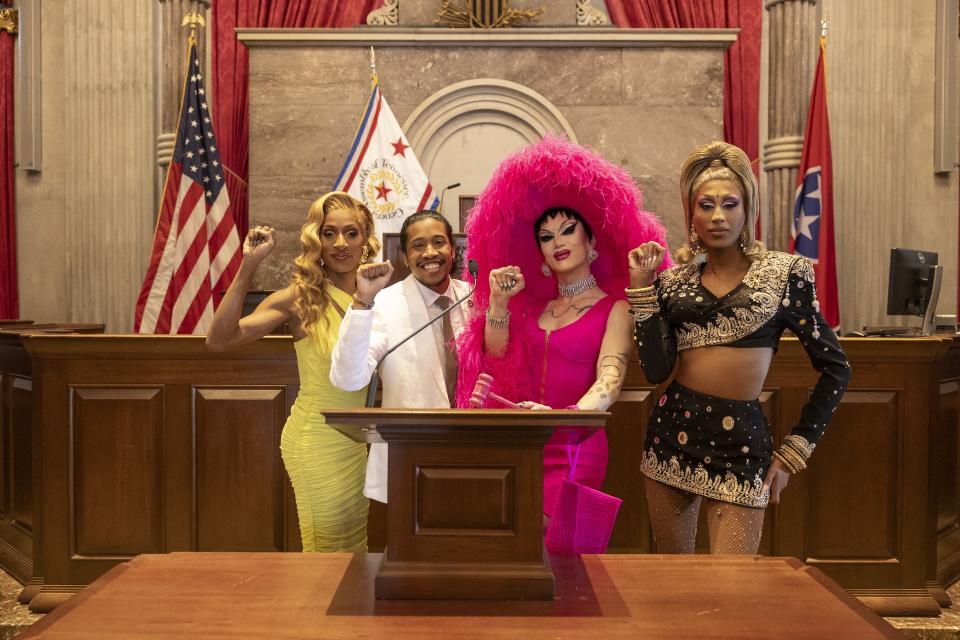
INGRAM: We’re Here has always been physically for drag queens coming to these small conservative towns, but it’s also meeting this moment of political climate and airing simultaneously while it’s still happening. To be able to document and air queer history at a time as it’s happening is a privilege, especially at a time when we are being erased. People are trying to take LGBTQ books out of libraries and erase us from history and not tell our stories. I mean, this is a huge privilege. And to be able to do this at this moment, at this quality with some of the most incredible storytellers, we’re just so happy that we’re able to do this and we pulled it off.
DEADLINE: Since you started this series, how do you think this country’s perception of drag has changed?
WARREN: I would say on the one hand, through RuPaul’s Drag Race, it’s become more a part of a certain element of our society. Drag queens would be in more opportunities than we’ve been seeing in the past. Then there’s been this backlash, that’s a swift backlash that I think has been going on where there’s still many people who are now looking at drag as this incredible form of entertainment, but also the right wing has used drag, and trans rights in particular, to really target and focus their hate there for whatever reason, because it’s an easy target. They’re trying to provoke fear, they’re trying to provoke animosity between different groups. And I think it’s been a very, very large shift, a huge shift in the public’s perception over the last four years from, ‘Wow, a drag show is coming to town. This is really fun!’ to now when we come, we know there’s going to be real resistance. There are people that are dead set against us being there, and they will make it abundantly clear that we are not welcome.
INGRAM: I definitely think that as drag has become more in the mainstream, hate and misinformation is being spread online in particular to people who may have never seen or met a drag queen before. Typically, it’s a privilege that people get to experience in larger cities, but I think it’s actually changed. I mean, if anything, We’re Here shows that there is a real place for drag in small communities because there’s not always a lot to do there. I think that what was actually happening is drag, and the love that drag can bring with it, was spreading across the country, but then conservative misinformation and memes about the drag community specifically started making people nervous. There’s a small group of haters, which in particular we were able to expose this ‘man-behind-the-curtain’ this season to show how small these voices are, even though they seem massive, online in particular. They may have a megaphone, but I think what’s really important is when we show up, we show up together. The Ls, the Bs, the Gs, the Ts, the Qs and the drag queens are leading the charge and saying, “There’s definitely a lot more love out there than hate.”
LOGRECO: Drag in some ways is really a stand-in for so many aspects of what’s going on in culture and so many ways in which personal freedom is being attacked, and also the way in which polarization is really eroding our society. So, I think we’re going in and we’re seeing tons of people who are great allies, beyond LGBTQ and the allies who love drag, who love the fact that we’re there. But the same token, the fact that drag is becoming more mainstream, the fact that people are more aware of drag, is taking people who are at a very extreme end of the spectrum and pulling them even further in that way and making their attacks more aggressive. The love increases, but this hate from a very vocal minority seems to increase in proportion to that, which is problematic and indicative of a bigger issue in terms of what’s going on in our society.
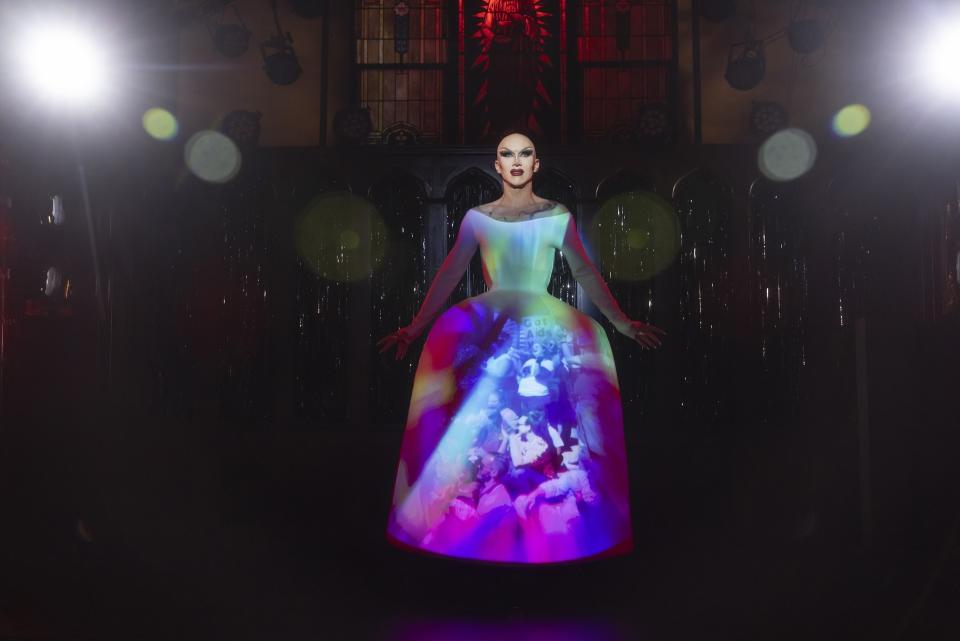
DEADLINE: Having changed the format, what do you think this season accomplishes in combating that kind of misinformation?
WARREN: This season, the performances ranged from very down and dirty in small bars to ones that were very meaningful. Like, you look at Christian in Oklahoma who was subjected to such horrible violence and he is just trying to advocate for hate crime laws to exist in Oklahoma, and he used his performance to get that point across. But I think Sasha’s last performance is what separates this season more than anything. When Sasha has that extraordinary reveal of the dress coming up off of her in that church and basically taking one skin and showing what’s underneath is this beauty… She describes it as sort of like this scarlet letter. She walks in with this red dress, then she’s there and she’s emoting so much in this song about how we should all be praying, and then the dress becomes purity, and then the projection on top of that dress. That is what encapsulates how we’ve used drag this season and combined the artistry at the highest level, with our emotions at the deepest level and the politics at the most current level.
LOGRECO: And we got a chance to show these internationally recognized performers as real people and to understand their own personal relationship to drag, and the fact that it is far more than just something they do to entertain others and to make money, that it’s something that really is incredibly meaningful to who they are and how they’ve developed as people. Being able to connect with them on that level by watching them really metabolize what’s going on in a certain environment with their drag kids hopefully allows the audience to connect with them that much more. For us, it was a really gratifying process.
INGRAM: I definitely think our storytelling is front and center too. In the past seasons, within an hour we would have an entire arc. But I think with showing the story arc becoming more front and center, there’s more of a central theme in these episodes that gives us a deeper authenticity that we weren’t able to really capture as much within an hour. We become more connected to the drag kids and contributors this season, and I think that authenticity comes through so beautifully in what you’re seeing on screen.
With that misinformation that’s really being spread, what we really show with the point of view of the show is that there’s nothing to fear about the LGBTQ community or drag queens. It’s really important for people that maybe have never met a drag queen before, or that may have gotten lost in misinformation, or felt compelled to dig a little deeper into really feel empathy for a community that they’re not necessarily a part of. But we really welcome everyone. This isn’t just a show made for the LGBTQ community, it is for everyone. It’s for mothers, fathers, anyone that has a sibling or anyone that wants to connect deeper to these stories. I think that we’re making them so beautifully and with so much authenticity, and we really want everyone to watch these episodes, in particular this season, because it is very urgent that we get our message across, that there is nothing to fear.
Best of Deadline
Hollywood & Media Deaths In 2024: Photo Gallery & Obituaries
TV Cancellations Photo Gallery: Series Ending In 2024 & Beyond
Sign up for Deadline's Newsletter. For the latest news, follow us on Facebook, Twitter, and Instagram.

 Yahoo Lifestyle
Yahoo Lifestyle 
